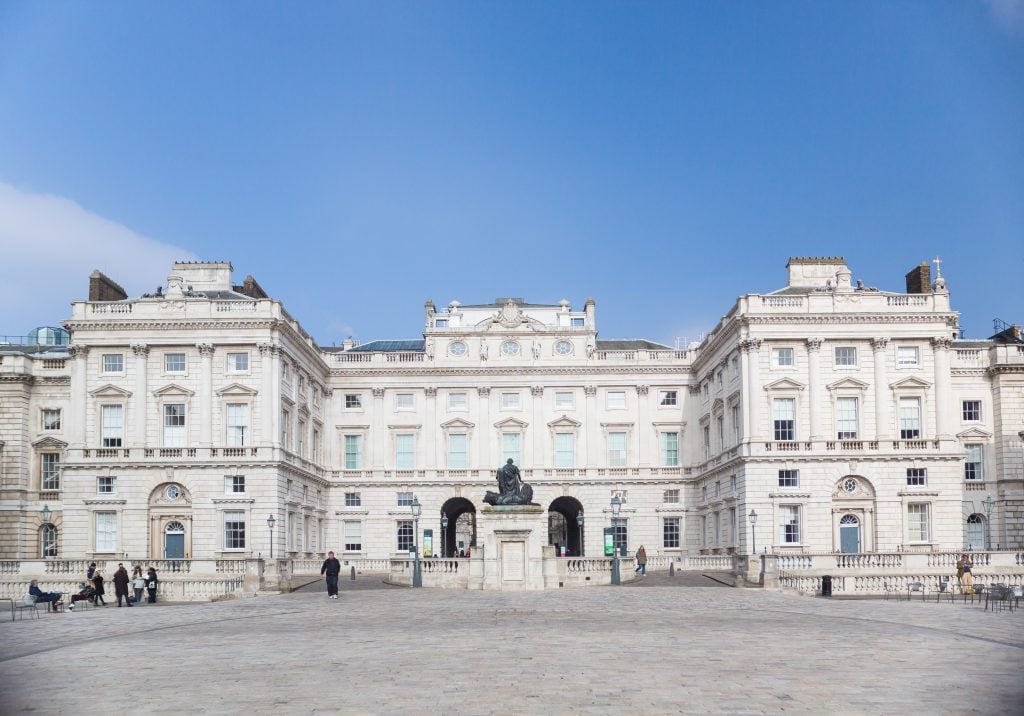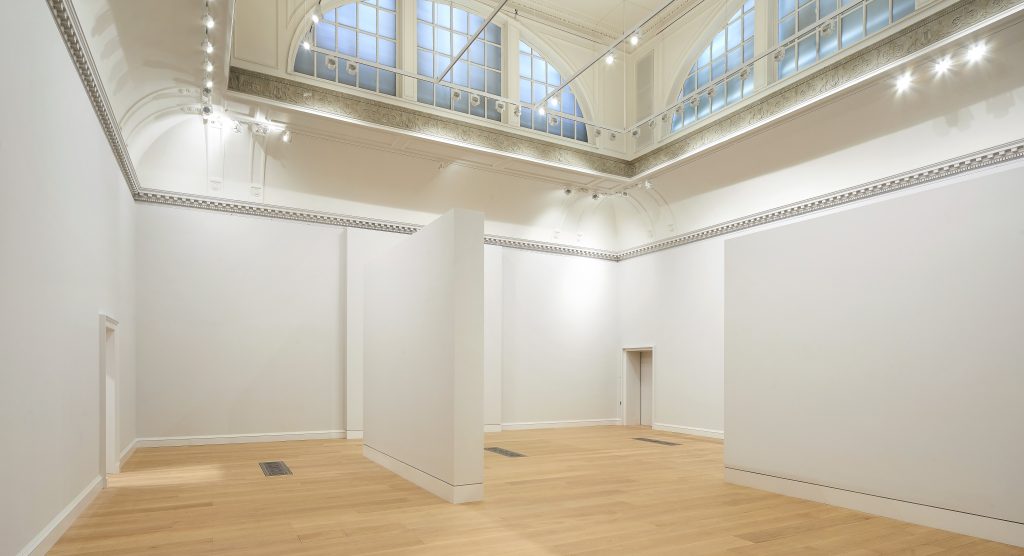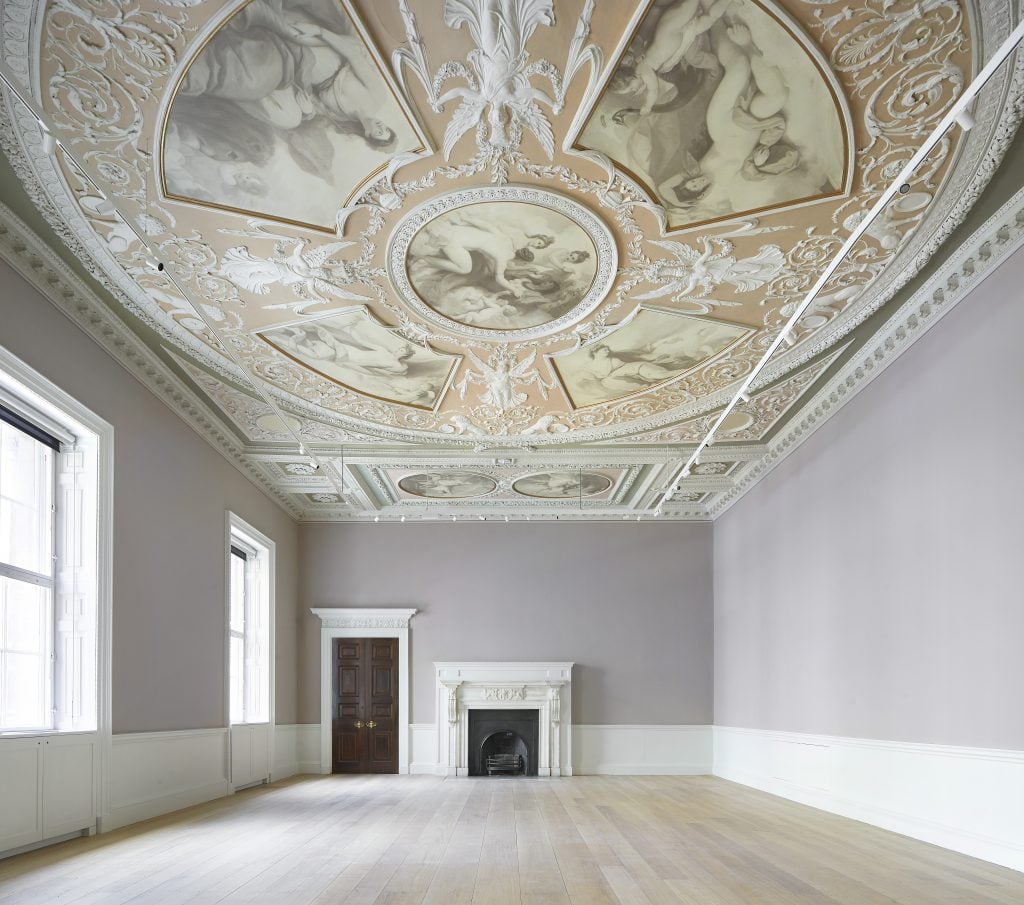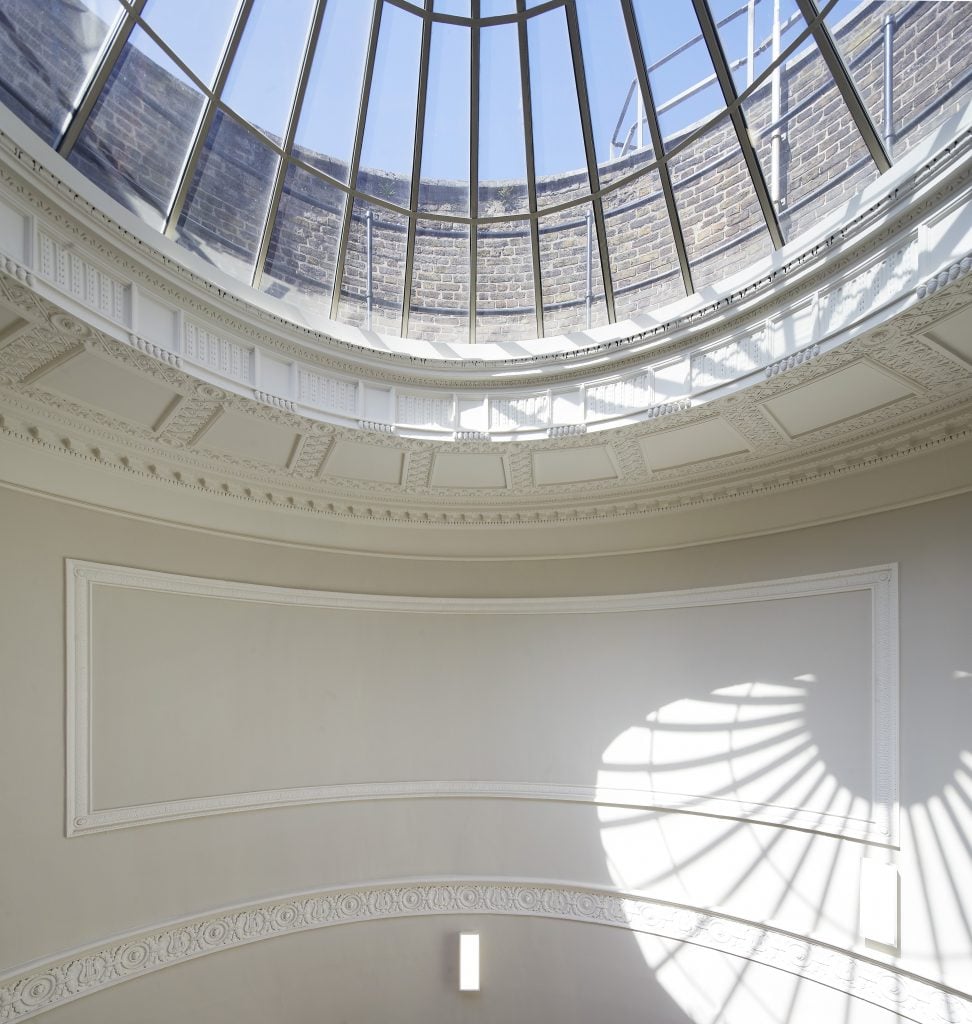Museums & Institutions
Take a Peek Inside the Courtauld Gallery’s Splendorous Multimillion-Dollar Revamp Before It Opens to the Public
The project is supported in part with £11 million in public funding and a £10 million gift from Leonard Blavatnik.

The project is supported in part with £11 million in public funding and a £10 million gift from Leonard Blavatnik.

Naomi Rea

London’s Courtauld Gallery has completed work on a modernization project that has been underway since 2018.
Today, June 9, the gallery revealed images of its revamped interiors at Somerset House ahead of its reopening in November.
Architects Witherford Watson Mann have designed the redevelopment of the building originally completed by Sir William Chambers in the 1770s. The ambitious overhaul plan includes a renovation of the institution’s existing exhibition spaces, two new galleries to house temporary exhibitions, and improved accessibility.
The project is supported with £11 million ($15.5 million) in public funding from the National Lottery Heritage Fund, as well as significant private funding, including a £10 million ($14.1 million) gift from the Ukraine-born British-American philanthropist Leonard Blavatnik.
“The Courtauld was founded in 1932 on the belief that everyone should have the opportunity to engage with art,” Courtauld director Deborah Swallow said in a statement. “This major redevelopment has provided a unique opportunity to look at the collection afresh, and it provides new narratives and new ways of enjoying our works.”

The LVMH Great Room. Photo: © Hufton + Crow.
The institution has also revealed details of the rehang of its collection, which belongs to the Samuel Courtauld Trust and encompasses masterpieces from the Middle Ages to the 20th century.
The institution’s famed Great Room, London’s oldest purpose-built exhibition space and the largest space in Somerset House, has been restored to its former grandeur after workers removed subdivisions to make it one vast gallery.
Now called the LVMH Great Room thanks to funding from the luxury goods company owned by mega-collector Bernard Arnault, it will house Impressionist and Post-Impressionist masterpieces, including Edouard Manet’s A Bar at the Folies-Bergère (1882), Van Gogh’s Self-Portrait with Bandaged Ear (1889), and works by Cézanne, Gauguin, Renoir, and Monet.

The Blavatnik Fine Rooms. Photo: © Hufton+Crow
The six galleries spanning the entire second floor, remodelled thanks to Blavatnik, whose name also graces Tate Modern’s newest wing, have now been renamed the Blavatnik Fine Rooms.
They will house a selection of works from the Renaissance to the 18th century, as well as a new space for the Courtauld’s collection of Medieval and Early Renaissance paintings and decorative arts. Highlights include a room dedicated to Peter Paul Rubens and Botticelli’s newly conserved altarpiece The Trinity With Saints.
Other galleries will show rotating displays of 20th-century art, including Oskar Kokoschka’s epic triptych, The Myth of Prometheus (1950).

The location of the new Cecily Brown commission, at the top of the third-floor staircase. Photo: ©Hufton+Crow.
When the gallery reopens to the public in November, it will unveil a new commission from artist Cecily Brown, which will take pride of place at the top of the gallery’s 18th-century staircase. Swallow said during a press conference that the work will “bring contemporary art back into the heart of gallery in a purposeful way.”
Three temporary exhibitions will also open in November. One will focus on a group of Modern drawings by U.S. and European masters, from Georg Baselitz to Cy Twombly; another on a range of British drawings; and the third will spotlight 20th-century British architectural photographer Anthony Kersting’s photos of Kurdistan from the 1940s, giving a view of many historic sites that have been damaged or destroyed in recent conflicts.